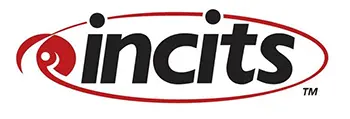INCITS: Information Technology Industry Council

INCITS, the InterNational Committee for Information Technology Standards, is a nonprofit organization that develops and publishes standards for the information technology field. Headquartered in Washington, D.C., United States, INCITS standards are propagated throughout the entire world by its membership base of 1,700 organizations spread across 13 countries. INCITS also serves as the administrator for the U.S. TAGs (United States Technical Advisory Group) to ISO/JTC 1 (International Organization for Standardization/Joint Technical Committee) and to many of its subcommittees, as well as the U.S. TAG to ISO/TC 211. Standards from INCITS are available both individually, directly through the ANSI webstore, and as part of a Standards Subscription. If you or your organization are interested in easy, managed, online access to standards that can be shared, a Standards Subscription may be what you need - please contact us at: [email protected] or 1-212-642-4980 or Request Proposal Price.
Below are INCITS's best-selling standards. To find additional standards, please use the search bar above.
INCITS 359-2012 (R2017)
Information technology - Role Based Access Control
This standard consists of two main parts: the RBAC Reference Model and the RBAC System and Administrative Functional Specification. The RBAC Reference Model defines sets of basic RBAC elements (i.e., users, roles, permissions, operations and objects) and relations as types and functions that are included in this standard. The RBAC System and Administrative Functional Specification specifies the features that are required of an RBAC system.
INCITS/ISO/IEC 14882:2020 (2021)
Programming Languages - C++
Specifies requirements for implementations of the C++ programming language. The first such requirement is that they implement the language, so this document also defines C++. Other requirements and relaxations of the first requirement appear at various places within this document. C++ is a general purpose programming language based on the C programming language as described in ISO/IEC 9899:2018 Programming languages — C (hereinafter referred to as the C standard). C++ provides many facilities beyond those provided by C, including additional data types, classes, templates, exceptions, namespaces, operator overloading, function name overloading, references, free store management operators, and additional library facilities.
INCITS/ISO/IEC 27001:2013 [2014]
Information technology - Security techniques - Information security management systems - Requirements
ISO/IEC 27001:2013 specifies the requirements for establishing, implementing, maintaining and continually improving an information security management system within the context of the organization. It also includes requirements for the assessment and treatment of information security risks tailored to the needs of the organization. The requirements set out in ISO/IEC 27001:2013 are generic and are intended to be applicable to all organizations, regardless of type, size or nature.
INCITS/ISO/IEC 9899-1999 (R2005)
Programming Languages - C (formerly ANSI/ISO/IEC 9899-1999)
Specifies the form and establishes the interpretation of programs written in the C programming language. This standard specifies: (1) the representation of C programs, (2) the syntax and constraints of the C language, (2) the semantic rules for interpreti
INCITS 226-1994[S2008]
Information Technology √ Programming Language √ Common Lisp
Promotes the portability of Common Lisp programs among a variety of data processing systems. It is a language specification aimed at an audience of implementors and knowledgeable programmers. It is neither a tutorial nor an implementation guide.
INCITS/ISO/IEC 9075-2:2011 [2012]
Information technology - Database languages - SQL - Part 2: Foundation (SQL/Foundation)
ISO/IEC 9075 defines Structured Query Language (SQL). The scope of SQL is the definition of data structure and the operations on data stored in that structure. ISO/IEC 9075-1, ISO/IEC 9075-2 and ISO/IEC 9075-11 encompass the minimum requirements of the language. Other parts define extensions.
ISO/IEC 9075-2:2011 defines the data structures and basic operations on SQL-data. It provides functional capabilities for creating, accessing, maintaining, controlling, and protecting SQL-data. Both static and dynamic variants of the language are proved. In addition to direct invocation, bindings are provided for the programming languages Ada, C, COBOL, Fortran, M, Pascal, and PL/I.
INCITS/ISO/IEC 14882-2003
Programming languages - C++
This International Standard specifies requirements for implementations of the C + + programming language. The first such requirement is that they implement the language, and so this International Standard also defines C + +. Other requirements and relaxations of the first requirement appear at various places within this International Standard.
INCITS/ISO/IEC 38505-1:2017 (2018)
Information technology -- Governance of IT -- Governance of data -- Part 1: Application of ISO/IEC 38500 to the governance of data
Provides guiding principles for members of governing bodies of organizations (which can comprise owners, directors, partners, executive managers, or similar) on the effective, efficient, and acceptable use of data within their organizations by applying the governance principles and model of ISO/IEC 38500 to the governance of data, assuring stakeholders that, if the principles and practices proposed by this document are followed, they can have confidence in the organization's governance of data, informing and guiding governing bodies in the use and protection of data in their organization, and establishing a vocabulary for the governance of data.
INCITS/ISO/IEC 9899:2018 (2019)
Information technology - Programming languages - C
Specifies the form and establishes the interpretation of programs written in the C programming language. It specifies the representation of C programs; the syntax and constraints of the C language; the semantic rules for interpreting C programs; the representation of input data to be processed by C programs; the representation of output data produced by C programs; the restrictions and limits imposed by a conforming implementation of C.
INCITS 322-2015 (R2020)
Information Technology - Card Durability Test Methods
Since the publication of INCITS 322-2008, additional test methods and refinements of the published test methods have been proposed.





